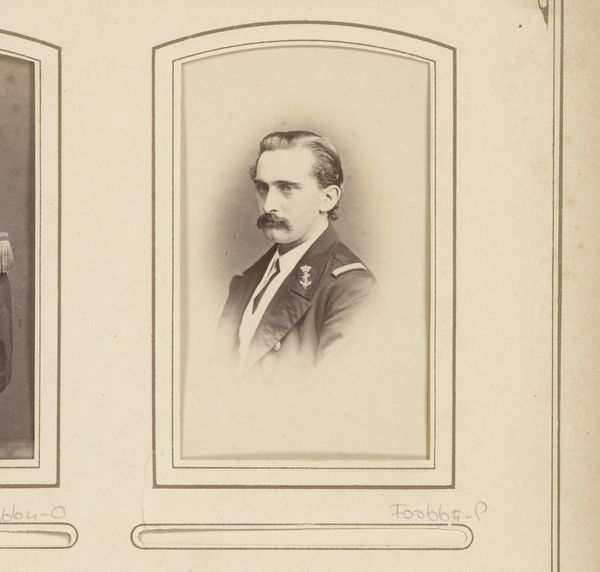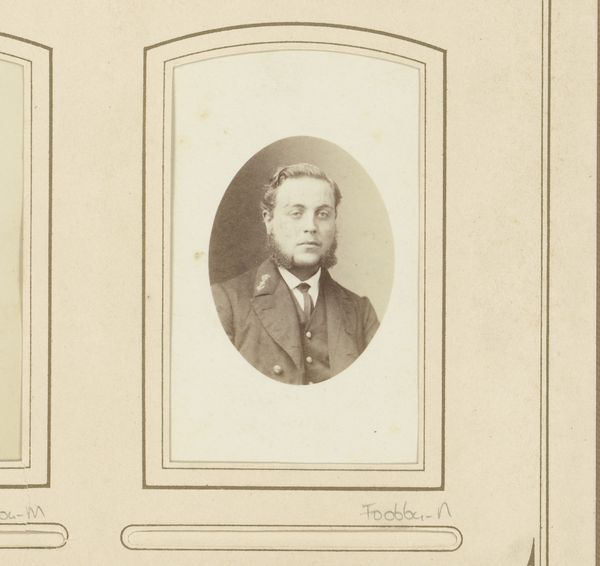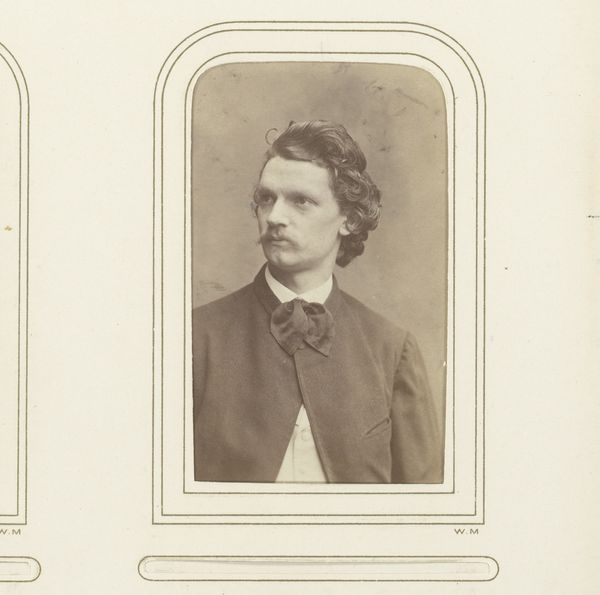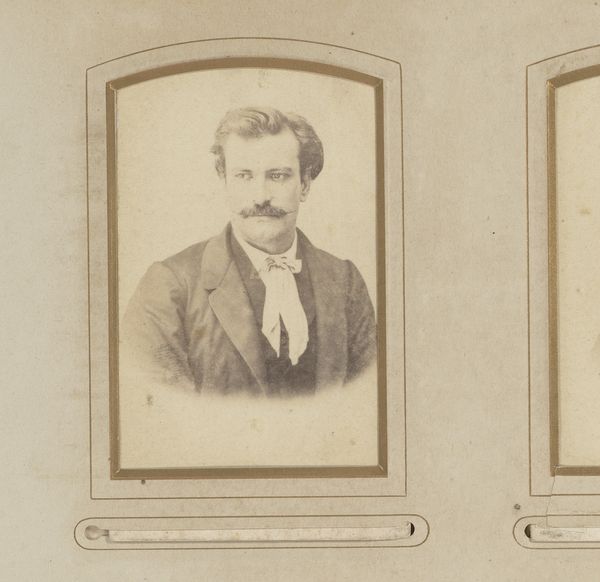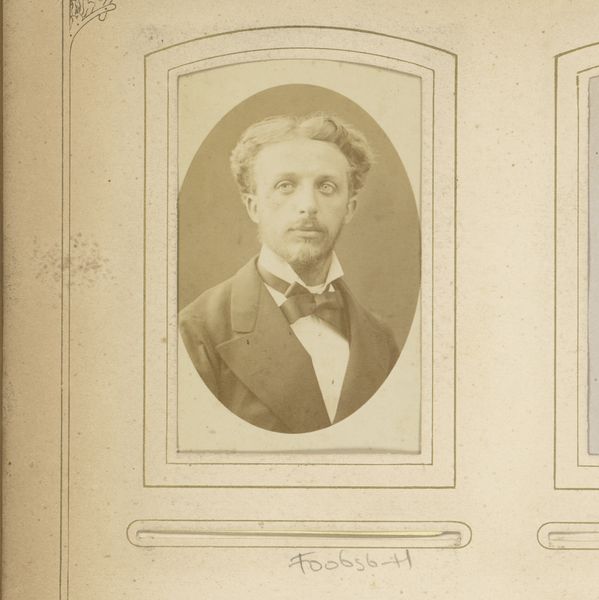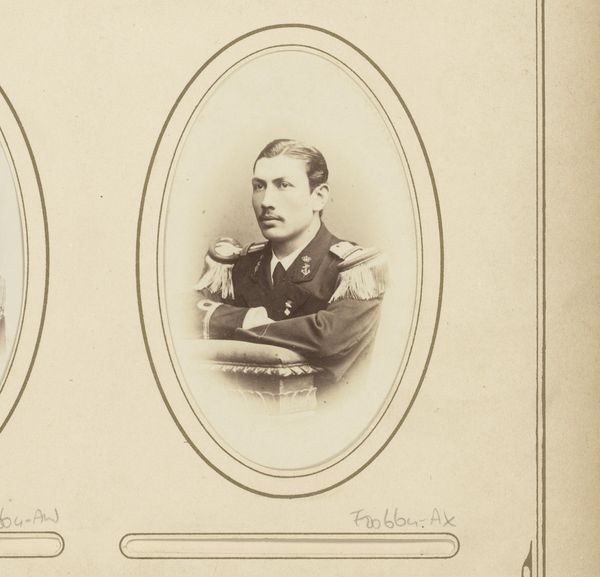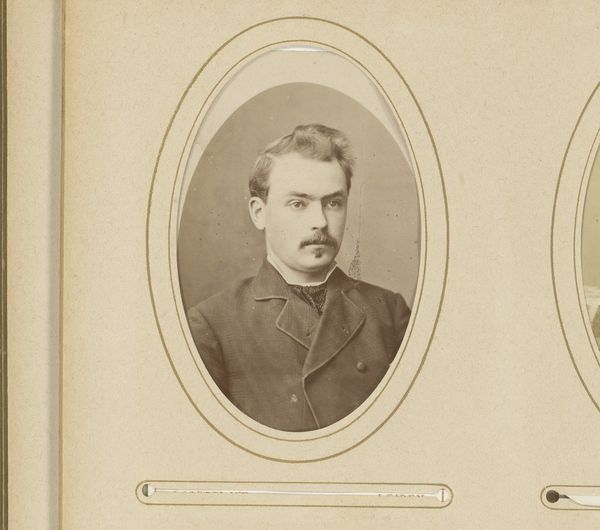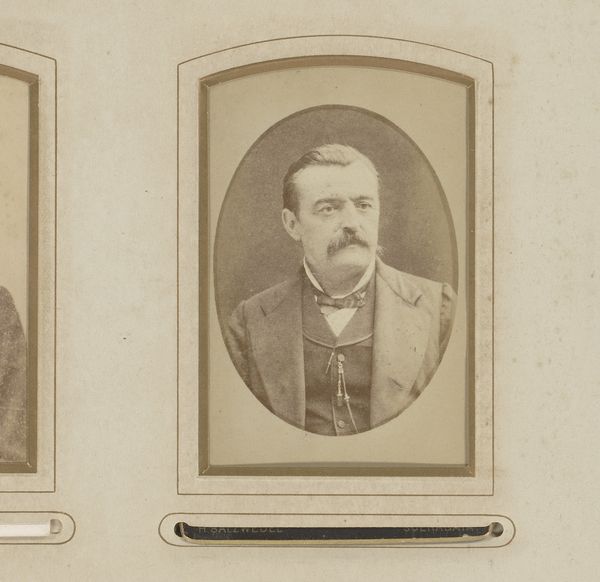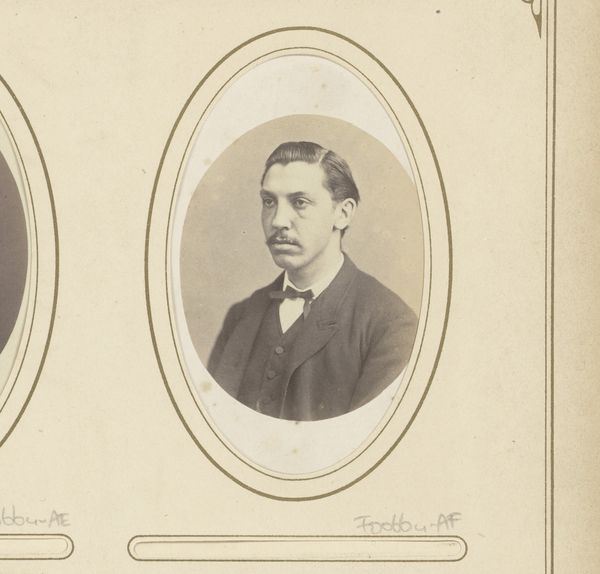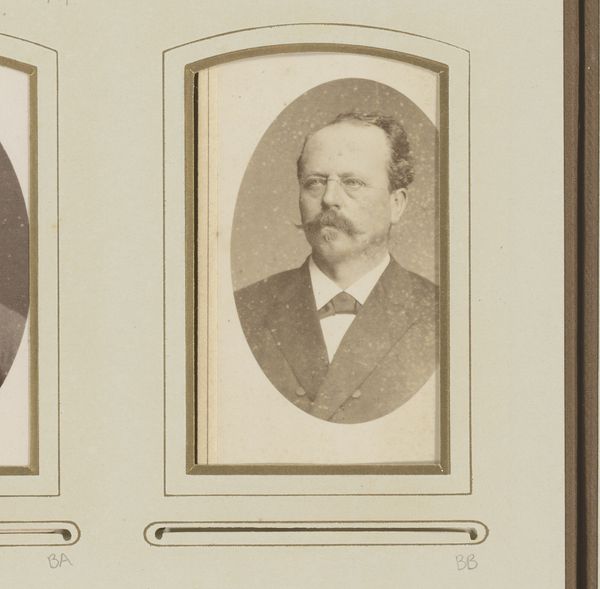
daguerreotype, photography, gelatin-silver-print
#
portrait
#
daguerreotype
#
photography
#
historical photography
#
gelatin-silver-print
#
19th century
Dimensions: height 85 mm, width 51 mm
Copyright: Rijks Museum: Open Domain
Editor: Here we have Albert Greiner's "Portret van een man," dating from 1861 to 1874, held at the Rijksmuseum. It's a gelatin silver print, a daguerreotype even! The sitter seems so earnest, and quite handsome with that wonderful mustache, but what catches my eye is its overall air of faded elegance. How do you interpret this work? Curator: The daguerreotype process, and its evolution into gelatin silver prints, holds significant weight, doesn't it? Think of it as more than just image-making. These portraits acted as powerful cultural artifacts. Photography offered a kind of immortality, a democratization of portraiture previously reserved for the elite. The man's pose, his carefully groomed mustache and neatly tailored coat—these aren't accidental. They speak of Victorian ideals of masculinity and bourgeois aspiration. He is consciously performing a role. Editor: Performing a role... interesting. Do you think he chose the backdrop too? Was there any symbolism related to set design? Curator: Consider the very act of capturing light, fixing a moment in time. Photography allowed Victorians to wrestle with their mortality, preserve likenesses for posterity. The sitter's somewhat serious expression, common in early photography due to long exposure times, became a symbol of gravitas and considered reflection. This 'serious' attitude might not reflect who they were. More broadly, images become like memory objects that take new meaning as time progresses, becoming more valued by subsequent generations as connections to the past. How does that inform your understanding of this man's portrait? Editor: I never thought about it that way. Now the faded elegance makes sense—it’s not just the photograph aging, but also our perception changing with time. Curator: Exactly. It shows how we invest images with so much more than their immediate content, contributing to how our memories, individually and culturally, evolve through these visual objects. Editor: Looking at it now, I realize I was too quick to judge his 'earnestness'. It's more a product of its time, preserved, reframed by history.
Comments
No comments
Be the first to comment and join the conversation on the ultimate creative platform.

